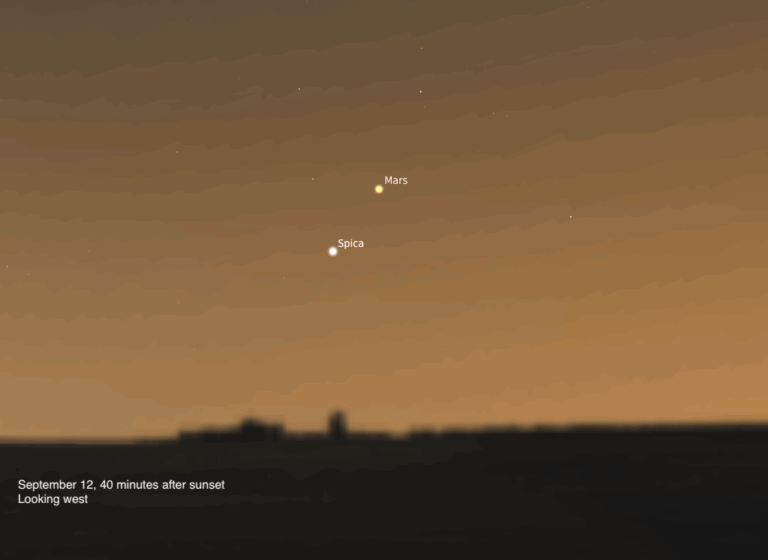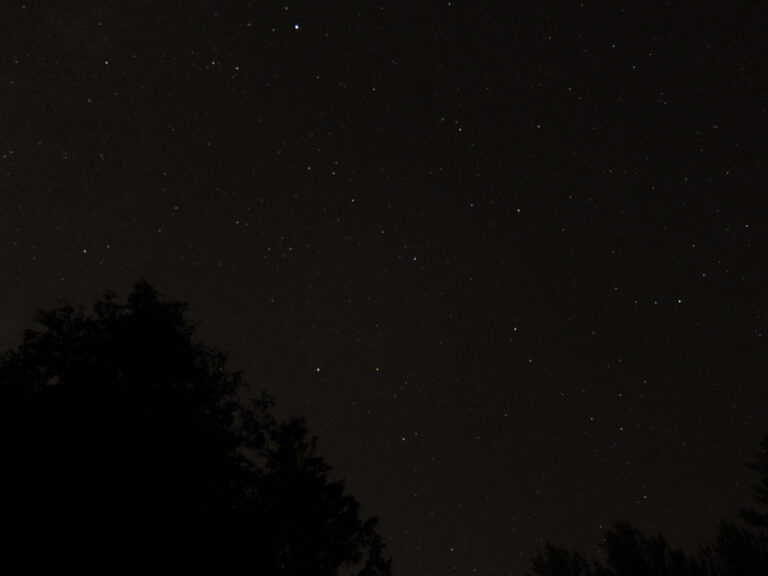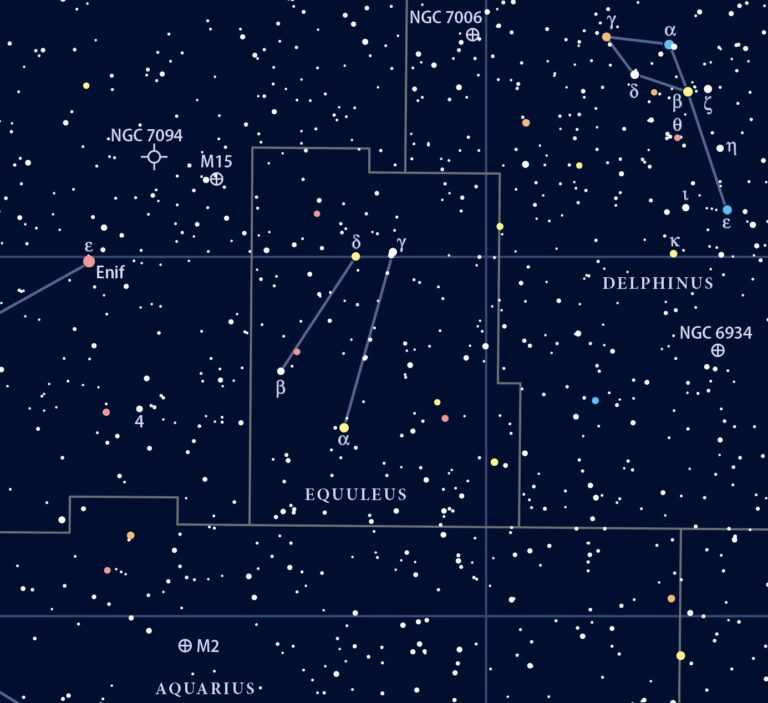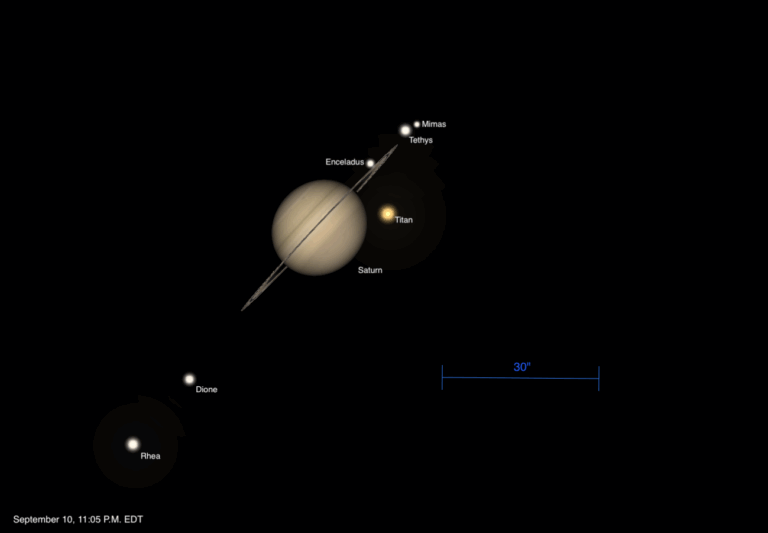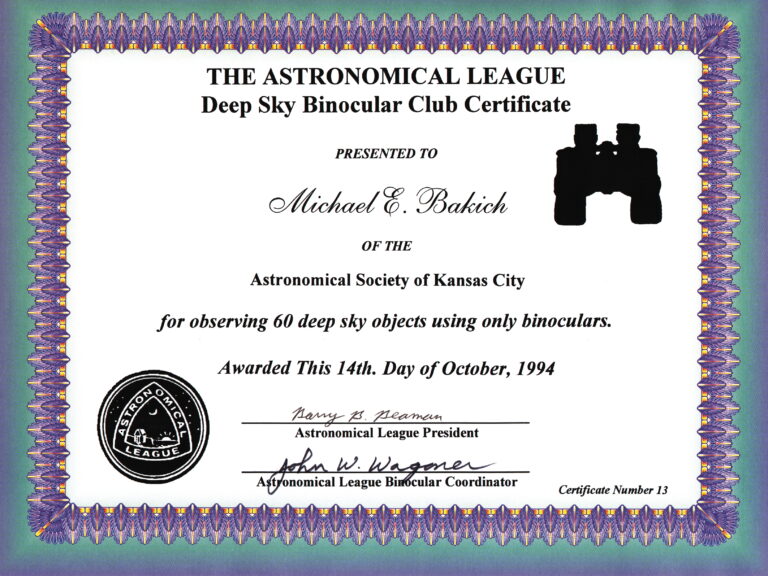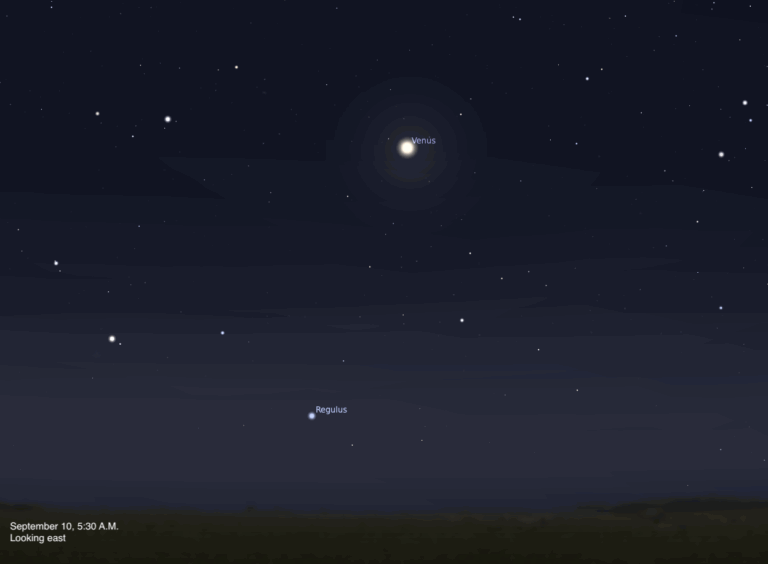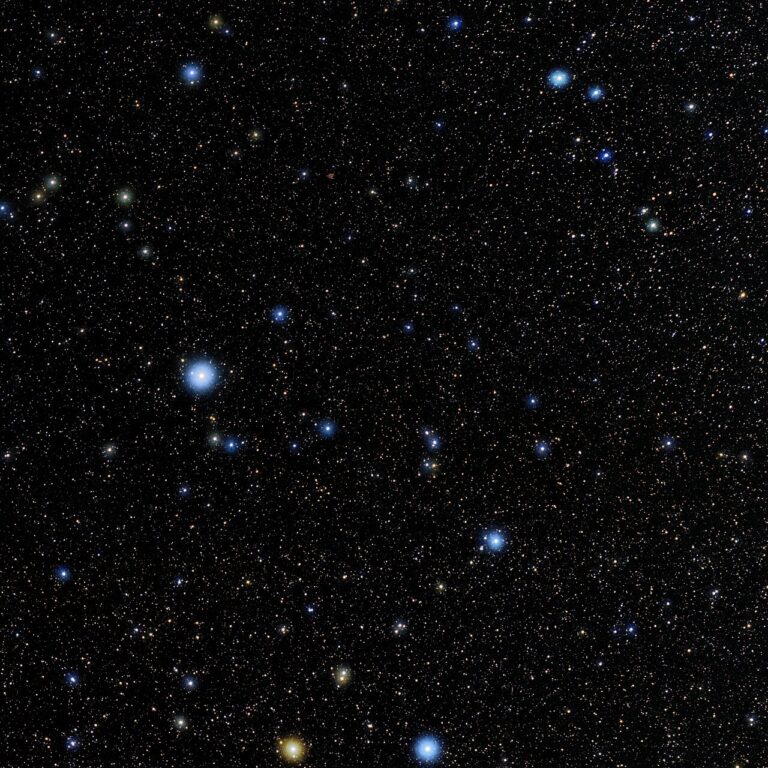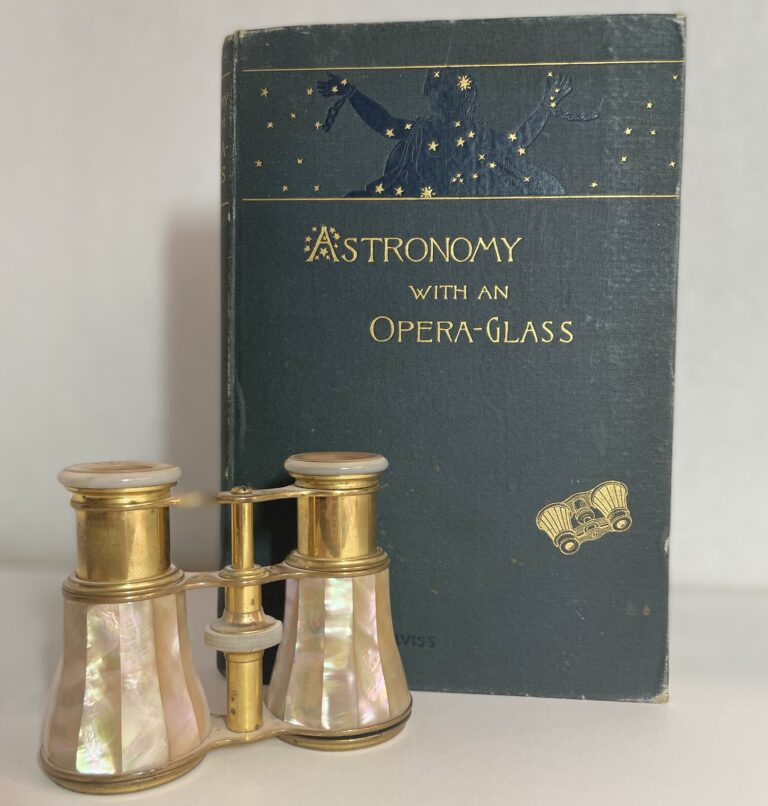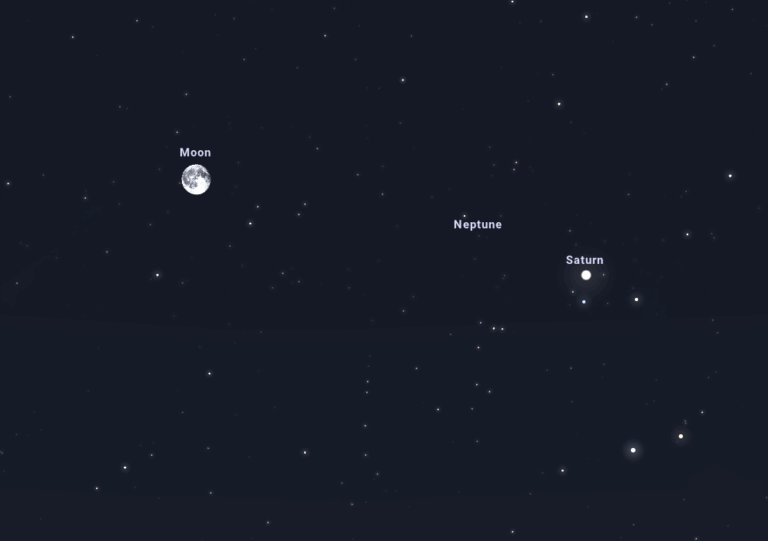
Key Takeaways:
- A Full Moon occurs when the Earth is between the Sun and the Moon.
- The Moon's orbit creates different phases, including a Full Moon.
- Full Moons have traditional names, like the Sturgeon Moon.
- The 2025 Full Moon schedule shows dates and times for each Full Moon.
The phenomenon of a Full Moon arises when our planet, Earth, is precisely sandwiched between the Sun and the Moon. This alignment ensures the entire side of the Moon that faces us gleams under sunlight. Thanks to the Moon’s orbit around Earth, the angle of sunlight hitting the lunar surface and being reflected back to our planet changes. That creates different lunar phases.
The next Full Moon will be the Hunter’s Moon, which occurs at 11:48 p.m. on Monday, Oct. 6, 2025. This Full Moon will also be a Super Moon, as well as the 2025 Harvest Moon.
We’ll update this article multiple times each week with the latest moonrise, moonset, Full Moon schedule, and some of what you can see in the sky each week.
Here’s the complete list of Full Moons this year and their traditional names.
2025 Full Moon schedule and names of each
(All times Eastern; * denotes a Super Moon.)
- Monday, Jan. 13 — 5:27 p.m. — Wolf Moon
- Wednesday, Feb. 12 — 8:53 a.m. — Snow Moon
- Friday, March 14 — 2:55 a.m. — Worm Moon
- Saturday, April 12 — 8:22 p.m. — Pink Moon
- Monday, May 12 — 12:56 p.m. — Flower Moon
- Wednesday, June 11 — 3:44 a.m. — Strawberry Moon
- Thursday, July 10 — 4:37 p.m. — Buck Moon
- Saturday, Aug. 9 — 3:55 a.m. — Sturgeon Moon
- Sunday, Sept. 7 — 2:09 p.m. — Corn Moon
- Monday, Oct. 6 — 11:48 p.m. — Hunter’s Moon*
- Wednesday, Nov. 5 — 8:19 a.m. — Beaver Moon*
- Thursday, Dec. 4 — 6:14 p.m. — Cold Moon*
The phases of the Moon in September 2025
The images below show the day-by-day phases of the Moon in September. The Full Moon this month was on Sunday, Sept. 7.
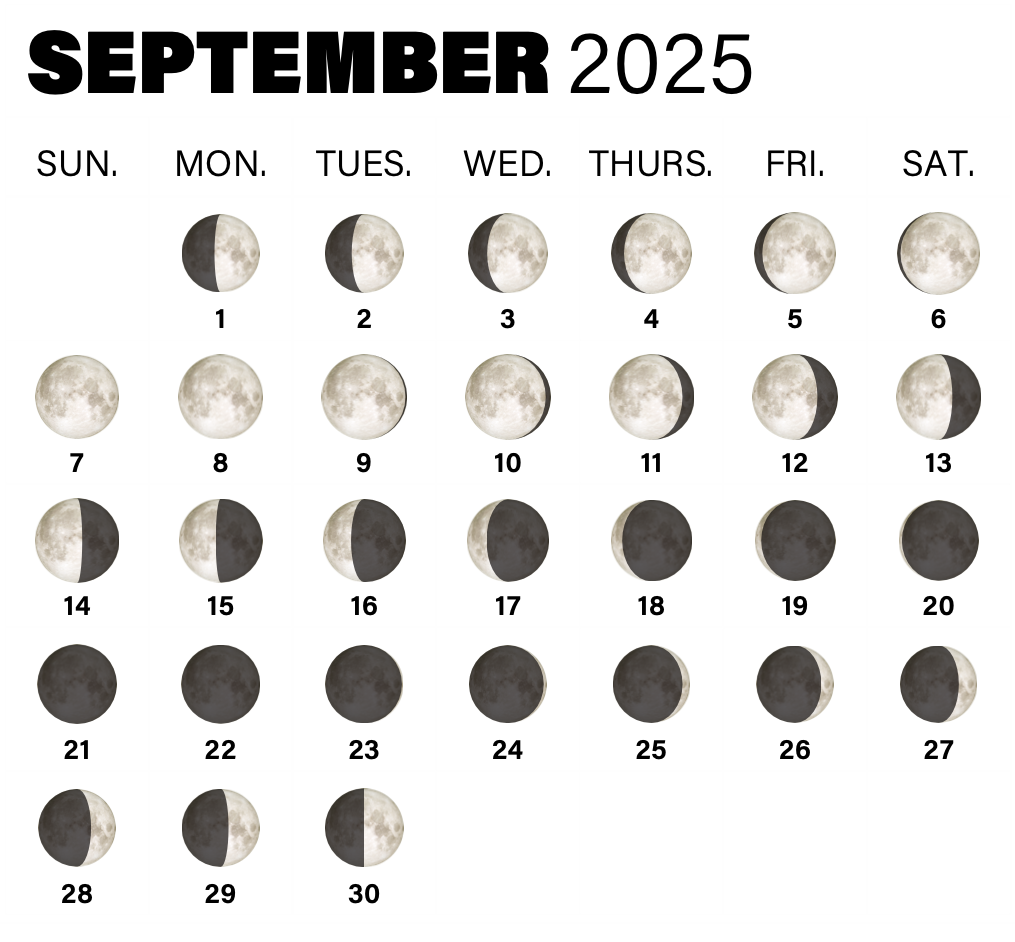
The moonrise and moonset schedule this week
The times below for sunrise, sunset, moonrise, and moonset are given in local time from 40° N 90° W. The Moon’s illumination is given at 12 P.M. local time from the same location. All other times are Eastern unless otherwise specified. For more details on upcoming sky events, check out our full Sky This Week column.
Thursday, September 11
Sunrise: 6:37 A.M.
Sunset: 7:15 P.M.
Moonrise: 9:16 P.M.
Moonset: 11:19 A.M.
Moon Phase: Waning gibbous (80%)
Friday, September 12
The waning Moon passes 5° north of Uranus at 10 P.M. EDT, around the time the pair is rising for those on the U.S. East Coast. The Moon lies to the lower left of the Pleiades star cluster — a few hours earlier, our satellite occulted several stars in this cluster, visible from parts of Europa, Asia, and the Middle East.
Sunrise: 6:38 A.M.
Sunset: 7:13 P.M.
Moonrise: 9:56 P.M.
Moonset: 12:37 P.M.
Moon Phase: Waning gibbous (70%)
Saturday, September 13
Sunrise: 6:39 A.M.
Sunset: 7:12 P.M.
Moonrise: 10:46 P.M.
Moonset: 1:53 P.M.
Moon Phase: Waning gibbous (58%)
Sunday, September 14
Last Quarter Moon occurs at 6:33 A.M. EDT, standing high in the early-morning sky. You can catch it before dawn in northeastern Taurus, located within 1° of the magnitude 1.7 star Beta (β) Tauri, also called Elnath. This star marks the tip of one of Taurus’ two horns, but has an interesting dual identity: It is also part of the constellation Augira, falling on the current border of Auriga and Taurus and carrying the designation Gamma (γ) Aurigae as well as Beta Tau.
Most U.S. observers will only see the Moon approach the star before day breaks or, farther west, slide just past Elnath without touching it. However, some southern and southwestern U.S. observers as well as many in Mexico and some in Central America will see the Moon cover Elnath in an occultation. The timing is heavily location dependent. For example, the star vanishes from the sky above Albuquerque, New Mexico, seconds before 5:50 A.M. MDT. You can check whether you will see an occultation and find the times the star will vanish and reappear from your location on the International Occultation Timing Association’s webpage for the event here.
Sunrise: 6:40 A.M.
Sunset: 7:10 P.M.
Moonrise: 11:46 P.M.
Moonset: 3:00 P.M.
Moon Phase: Waning crescent (47%)
Monday, September 15
Sunrise: 6:41 A.M.
Sunset: 7:08 P.M.
Moonrise: —
Moonset: 3:57 P.M.
Moon Phase: Waning crescent (30%)
Tuesday, September 16
The Moon passes 5° north of Jupiter at 7 A.M. EDT. Early risers can enjoy the pairing before sunrise, standing some 50° high in the east an hour before the Sun crests the horizon. Now in its waning crescent phase, the Moon is less than 30 percent lit and not quite so glaring, allowing you to make out the stars of the surrounding constellations. The Moon is some 4° west of Pollux this morning, standing between this star and Jupiter.
Sunrise: 6:42 A.M.
Sunset: 7:07 P.M.
Moonrise: 12:53 A.M.
Moonset: 4:42 P.M.
Moon Phase: Waning crescent (26%)
Wednesday, September 17
Sunrise: 6:43 A.M.
Sunset: 7:05 P.M.
Moonrise: 2:05 A.M.
Moonset: 5:18 P.M.
Moon Phase: Waning crescent (17%)
Thursday, September 18
Sunrise: 6:44 A.M.
Sunset: 7:03 P.M.
Moonrise: 3:16 A.M.
Moonset: 5:46 P.M.
Moon Phase: Waning crescent (10%)
Friday, September 19
The Moon passes 0.8° north of Venus and 1.3° north of magnitude 1.4 Regulus at 8 A.M. EDT, all with Venus less than 0.5° from Regulus as well.
The trio rises together around 4:30 A.M. local daylight time. Along the U.S. East Coast, the three are nearly in a vertical line as they rise, with Venus sandwiched between the Moon above it and Regulus below. Both the Moon and Venus are moving northeast (toward the lower left on the sky), with the Moon moving quicker than the planet. The line they create, with Regulus as the stationary base, slowly skews in this direction as the hours pass.
The best time to catch the scene is about an hour before dawn from any location, when the trio is more than 10° high in the east, huddled together in southwestern Leo. All three should show up well in skyscape photos.
Some locations in Europe, Greenland, and far Northern Canada will see the Moon pass in front of Venus, rather than simply close to the planet — you can find location-dependent details on the International Occultation Timing Association’s site here.
Sunrise: 6:45 A.M.
Sunset: 7:02 P.M.
Moonrise: 4:24 A.M.
Moonset: 6:10 P.M.
Moon Phase: Waning crescent (5%)
The phases of the Moon
The phases of the Moon are: New Moon, waxing crescent, First Quarter, waxing gibbous, Full Moon, waning gibbous, Last Quarter, and waning crescent. A cycle starting from one Full Moon to its next counterpart, termed the synodic month or lunar month, lasts about 29.5 days.
Though a Full Moon only occurs during the exact moment when Earth, Moon, and Sun form a perfect alignment, to our eyes, the Moon seems Full for around three days.
RELATED: 20 things to see on the Moon
Different names for different types of Full Moon
There are a wide variety of specialized names used to identify distinct types or timings of Full Moons. These names primarily trace back to a blend of cultural, agricultural, and natural observations about the Moon, aimed at allowing humans to not only predict seasonal changes, but also track the passage of time.
For instance, almost every month’s Full Moon boasts a name sourced from Native American, Colonial American, or other North American traditions, with their titles mirroring seasonal shifts and nature’s events.
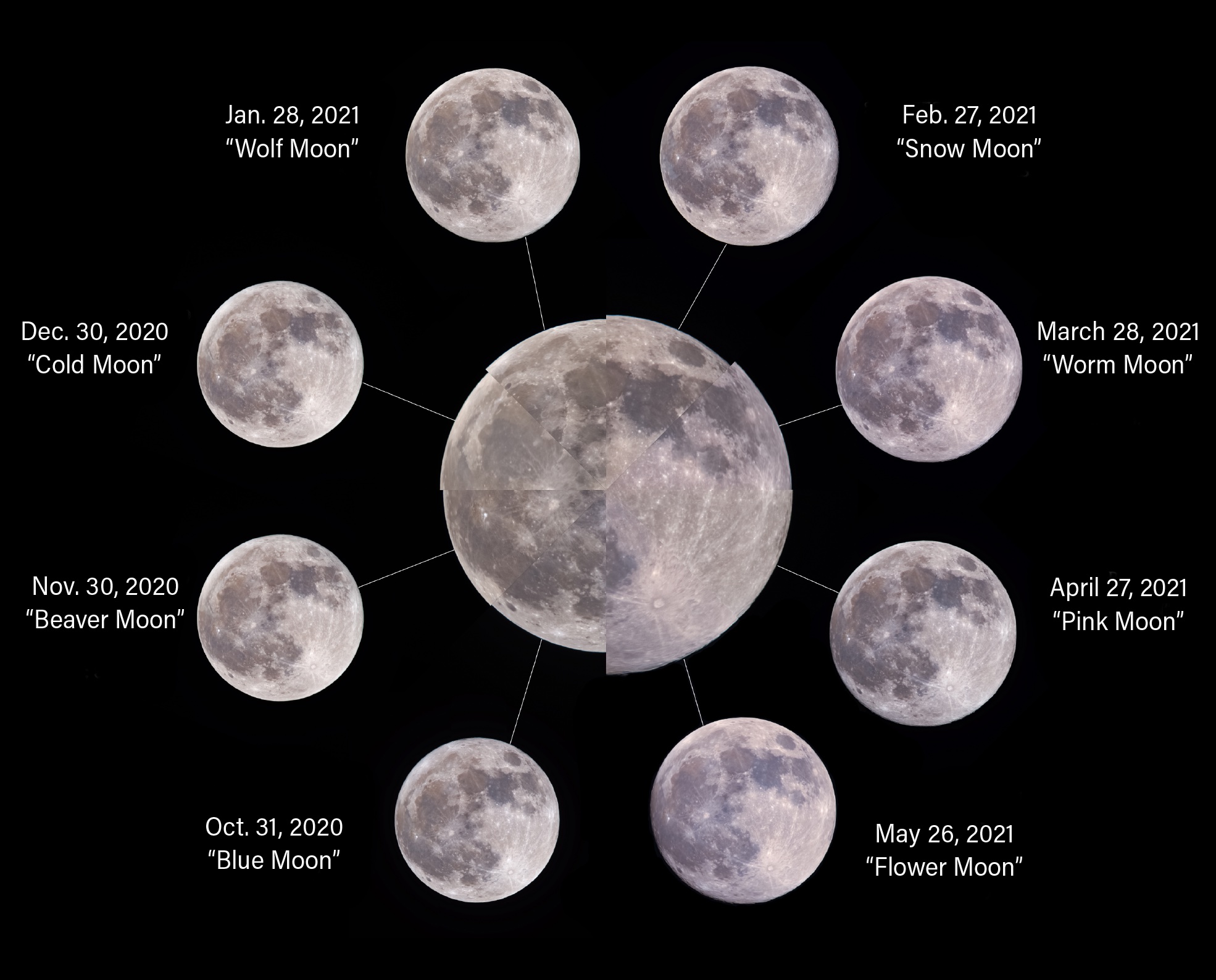
Wolf Moon (January): Inspired by the cries of hungry wolves.
Snow Moon (February): A nod to the month’s often heavy snowfall.
Worm Moon (March): Named after the earthworms that signal thawing grounds.
Pink Moon (April): In honor of the blossoming pink wildflowers.
Flower Moon (May): Celebrating the bloom of flowers.
Strawberry Moon (June): Marks the prime strawberry harvest season.
Buck Moon (July): Recognizing the new antlers on bucks.
Sturgeon Moon (August): Named after the abundant sturgeon fish.
Corn Moon (September): Signifying the corn harvesting period.
Hunter’s Moon (October): Commemorating the hunting season preceding winter.
Beaver Moon (November): Reflects the time when beavers are busy building their winter dams.
Cold Moon (December): Evocative of winter’s chill.
In addition, there are a few additional names for Full Moons that commonly make their way into public conversations and news.
Super Moon: This term is reserved for a Full Moon that aligns with the lunar perigee, which is the Moon’s nearest point to Earth in its orbit. This proximity renders the Full Moon unusually large and luminous. For a Full Moon to earn the Super Moon tag, it should be within approximately 90 percent of its closest distance to Earth.
Blue Moon: A Blue Moon is the second Full Moon in a month that experiences two Full Moons. This phenomenon graces our skies roughly every 2.7 years. Though the term suggests a color, Blue Moons aren’t truly blue. Very occasionally, atmospheric conditions such as recent volcanic eruptions might lend the Moon a slightly blueish tint, but this hue isn’t tied to the term.
Black Moon: A Black Moon is a recent, unofficial term that can describe one of two situations. Either the third of four New Moons in a single astronomical season or the second of two New Moons in a month is a Black Moon. As its name suggests, the Black Moon is completely dark, as it is a New Moon that occurs when the Moon is between the Sun and Earth. The New Moon cannot be observed except during a total solar eclipse.
Harvest Moon: Occurring closest to the autumnal equinox, typically in September, the Harvest Moon is often renowned for a distinct orange tint it might display. This Full Moon rises close to sunset and sets near sunrise, providing extended hours of bright moonlight. Historically, this was invaluable to farmers gathering their produce.
Common questions about Full Moons
What is the difference between a Full Moon and a New Moon? A Full Moon is witnessed when Earth is between the Sun and the Moon, making the entire Moon’s face visible. Conversely, during a New Moon, the Moon lies between Earth and the Sun, shrouding its Earth-facing side in darkness.
How does the Full Moon influence tides? The Moon’s gravitational tug causes Earth’s waters to bulge, birthing tides. During both Full and New Moons, the Sun, Earth, and Moon are in alignment, generating “spring tides.” These tides can swing exceptionally high or low due to the combined gravitational influences of the Sun and Moon.
Here are the dates for all the lunar phases in 2025:
| New | First Quarter | Full | Last Quarter |
|---|---|---|---|
| Jan. 6 | Jan. 13 | Jan. 21 | |
| Jan. 29 | Feb. 5 | Feb. 12 | Feb. 20 |
| Feb. 27 | March 6 | March 14 | March 22 |
| March 29 | April 4 | April 12 | April 20 |
| April 27 | May 4 | May 12 | May 20 |
| May 26 | June 2 | June 11 | June 18 |
| June 25 | July 2 | July 10 | July 17 |
| July 24 | Aug. 1 | Aug. 9 | Aug. 16 |
| Aug. 23 | Aug. 31 | Sept. 7 | Sept. 14 |
| Sept. 21 | Sept. 29 | Oct. 6 | Oct. 13 |
| Oct. 21 | Oct. 29 | Nov. 5 | Nov. 12 |
| Nov. 20 | Nov. 28 | Dec. 4 | Dec. 11 |
| Dec. 19 | Dec. 27 |

